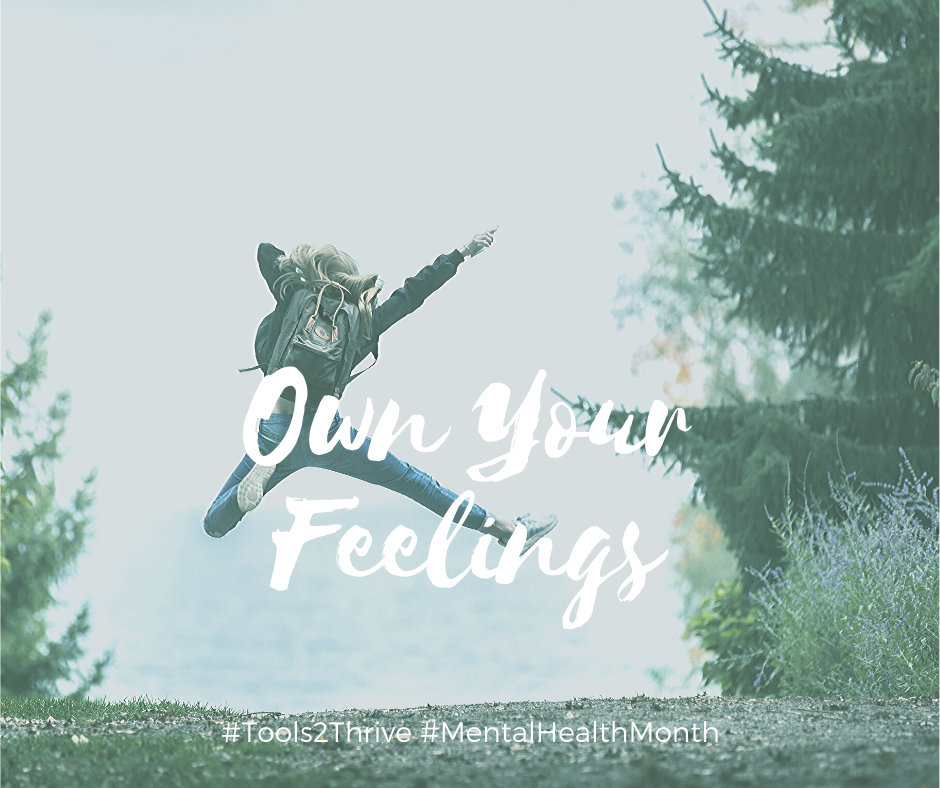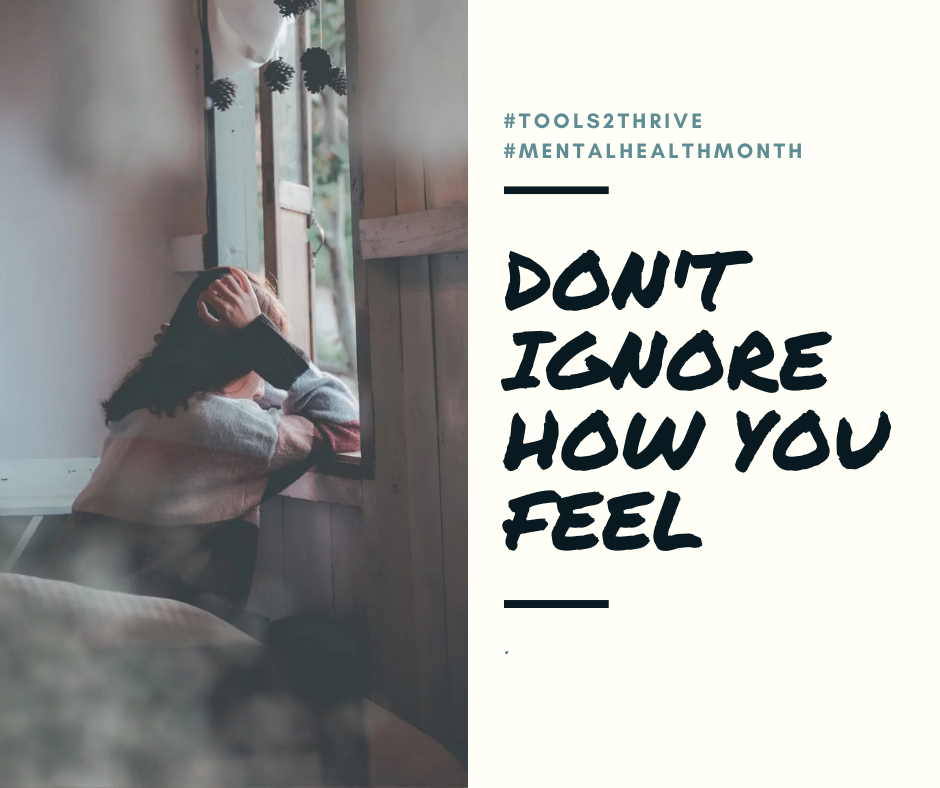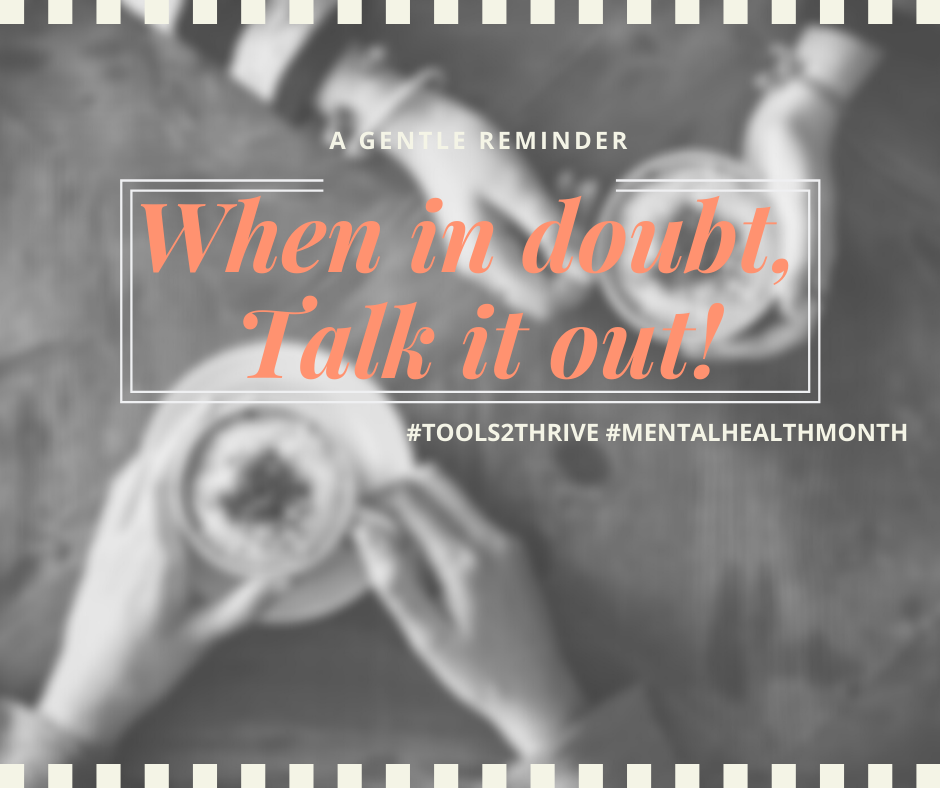During Mental Health Awareness Month 2020 we are sharing five practical “Tools2Thrive” that everyone can use to bolster their mental health and increase their resiliency in the face of challenging situations. These practical tools include owning your feelings, finding the positive after loss, eliminating toxic influences, creating healthy routines, and supporting & connecting with others.

It can be easy to get caught up in your emotions as you’re feeling them. Most people don’t think about what emotions they are dealing with, but taking the time to really identify what you’re feeling can help you to better cope with challenging situations.
Everyone has emotions as they are part of the human experience and you have every right to feel them, regardless of gender, sexual orientation, ethnicity, socio-economic status, race, or religion.
Fact: People who are specific about identifying and labeling their emotions are less likely to binge drink, be physically aggressive, or self-injure when distressed.
Taking the time to slow down and identify what we are really experiencing can help us feel better and can improve our communication and relationships with others. Using the prompts below, think of a specific action or event and fill in the blank to identify what’s underneath.
- I felt bad when (Action or Event), but what I was really feeling was _______, ________, and ________.
- I felt sad when (Action or Event), but what I was really feeling was _______, ________, and ________.
- I felt happy when (Action or Event), but what I was really feeling was _______, _______, and _______.
Most of us have heard the term “bottling up your feelings” before. When we push our feelings aside without addressing them, their strength builds making us more likely to “explode” at some point in the future.
Tip: Don’t ignore how you’re feeling. Talk it out.

No one wants to explode, so taking the time to really process how you are feeling is crucial to your mental and emotional health. If you’re not ready to talk to someone, try journaling. Each night write down 3 feelings you had over the course of the day and what caused them. It doesn’t need to be long. Just a few sentences or bullet points to help you practice being comfortable with identifying and expressing your emotions.
When asked about our feelings, most people will usually use words like bad, sad, mad, good, fine, or okay. However, at the root of those basic responses are many words that better describe how we feel. Identifying the specific emotion can be an excellent first step to the resolution of distress.
Fact: The English language has over 3,000 words for emotions.
Feeling words are the critical component and help you to understand and express the emotions that you have. Check out a few examples of positive and negative feeling words below:
- Positive Feeling Words: Admiration, Affectionate, Confident, Excited, Exhilarated, Gratitude, Included, Intrigued, Joyful, Peaceful, Refreshed
- Negative Feeling Words: Afraid, Agitated, Angry, Anxious, Confusion, Disconnected, Disgust, Embarrassment, Envy, Helpless, Pain, Sadness, Stress, Tired, Vulnerable
Find someone you trust that you can talk to about how you’re feeling. It can be a relief to voice what you’ve been thinking and feeling all day.
Tip: When in doubt, talk it out!

Voicing what you are struggling with can be beneficial in that you are able to get it out into the open and not have to dwell on your own. Find people that can be a shoulder, ear, or use their own experiences to connect with and help.
Mental Health of America has created several handouts regarding practical tools to thrive when faced with difficult situations affecting your mental health.
CLICK HERE for a PDF with additional information about Owning Your Feelings
To learn more about this topic and other mental health awareness activities, visit Mental Health of America’s website.
